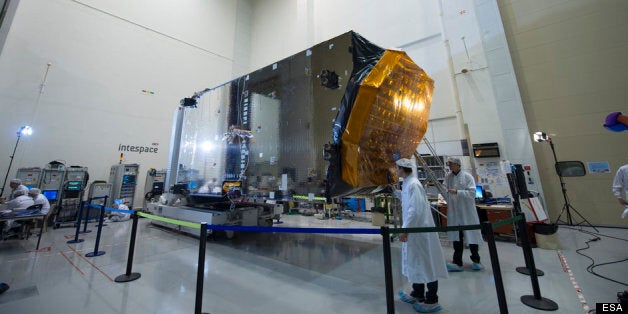
Two space missions are set to be launched this year that will create a 'broadband quality' communications network in space.
The European Space Agency's (ESA) AlphaSat (to be launched 25 July) and Nasa's Lunar Atmosphere And Dust Environment Explorer (Ladee, launching 5 September) will revolutionise the ability to collect data from other satellites.
The new hardware, outlined in a detailed piece by Nature, will create a network with huge capacity for future growth.
The ESA satellite will primarily serve the Inmarsat network, but will also include an optical communication terminal - effectively a data laser - which could run at 300 Mb/s. This experimental laser will be used to communicate with the German Tandem-X satellite, not with Earth.
Meanwhile Nasa's more advanced Ladee will use a 10cm telescope to direct a 622 Mb/s speed stream from the Moon back to Earth.
Nasa's Lunar Reconnaissance Orbiter, currently in orbit around our natural satellite, is limited in what it can send back -- but its capacity will be improved by up to six times by the new laser-based system.
Combined, the hardware will create what is effectively a broadband network in space, notes Engadget.
Researchers have been forced to look for new ways to boost the capacity of data streams from space because of constraints on the radio channels which are currently used. Switching some of these channels to laser-based systems opens up capacity for more and faster data collection.
"This is a big step forward," Hamid Hemmati, a specialist in optical communications at Nasa's Jet Propulsion Laboratory, told Nature.
"Europe is going beyond demonstrations for the first time and making operational use of the technology."